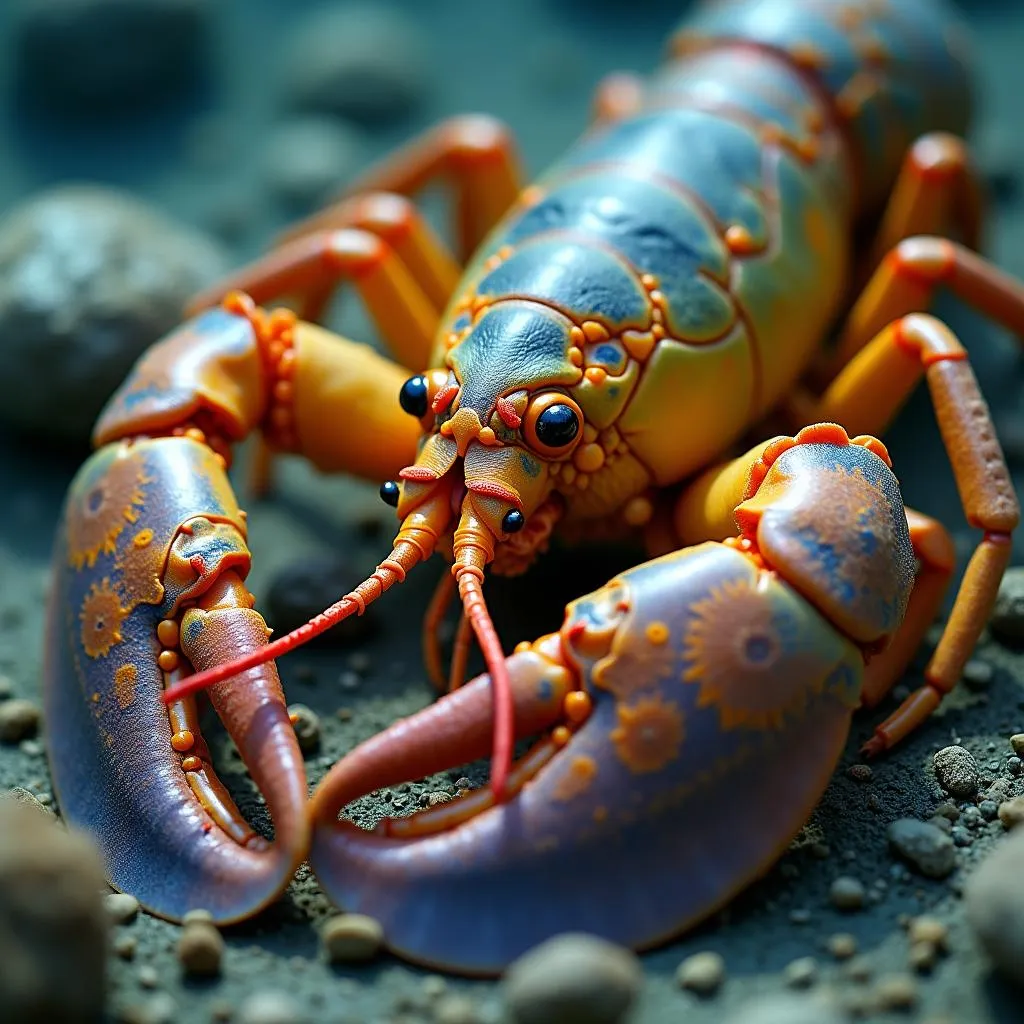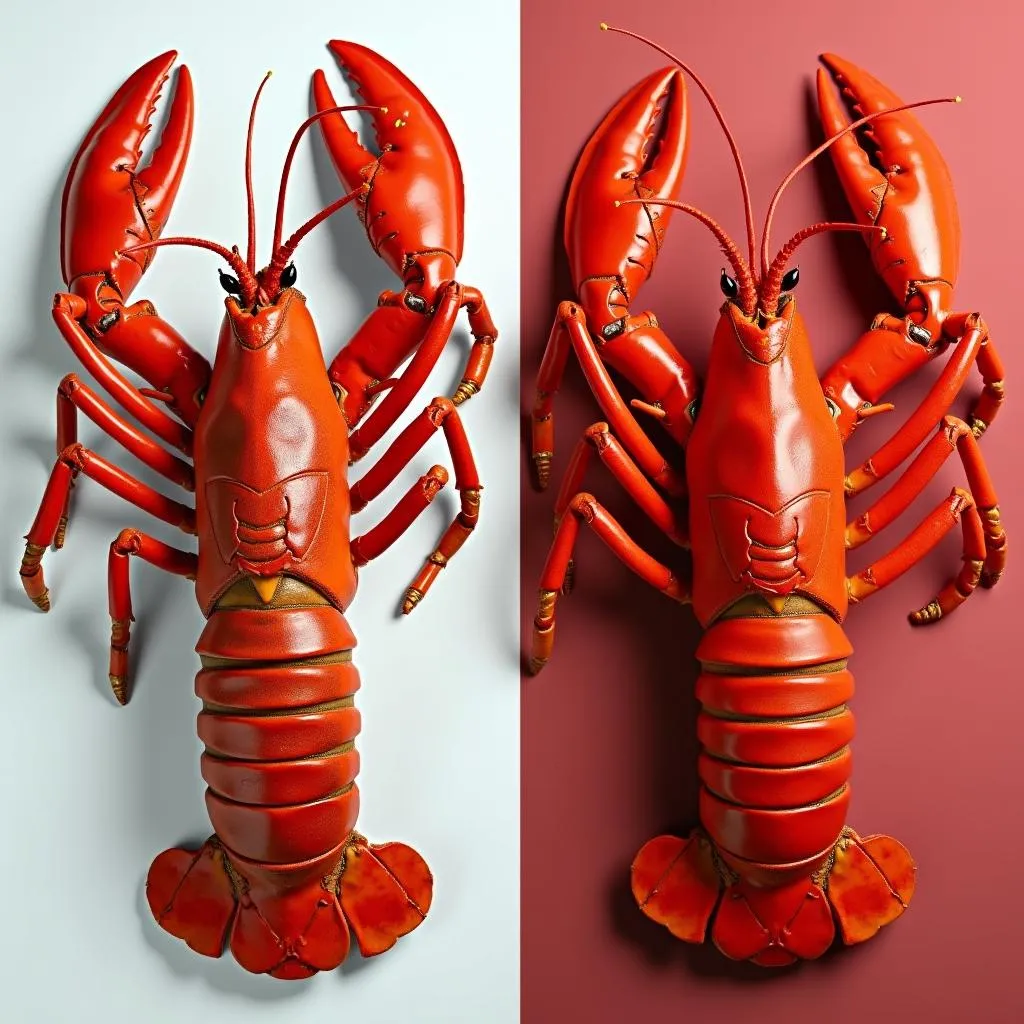Lobster – the word itself conjures images of vibrant red shells, succulent white meat, and luxurious seaside dining. But have you ever wondered about the true color of a lobster before it hits the boiling pot? The answer, my friend, is far more nuanced than you might think.
 Live Lobster on the Ocean Floor
Live Lobster on the Ocean Floor
Beyond the Boiling Point: A Lobster’s Natural Camouflage
While a cooked lobster boasts a striking crimson hue, a live lobster actually sports a spectrum of colors, often a mottled blend of blue-green, olive, and brown. This natural camouflage helps them blend seamlessly with their rocky, seaweed-strewn habitat on the ocean floor, providing crucial protection from predators.
The Science Behind the Shell: Why Lobsters Change Color
The dramatic color transformation during cooking is a fascinating chemical reaction. A lobster’s shell contains a pigment called astaxanthin, which is naturally red but bound to a protein molecule, masking its true color. Heat disrupts this protein bond, releasing the astaxanthin and resulting in the iconic red we associate with cooked lobster.
 Lobster Color Transformation During Cooking
Lobster Color Transformation During Cooking
Rare and Remarkable: When Lobsters Defy the Norm
While the majority of lobsters conform to the blue-green-brown spectrum, nature occasionally throws a curveball. Genetic mutations can lead to some extraordinary variations:
- Blue Lobsters: These sapphire beauties are incredibly rare, estimated to occur once in every two million lobsters.
- Yellow Lobsters: Also known as calico lobsters, these vibrant crustaceans boast a striking yellow hue and are even rarer than their blue counterparts.
- Albino Lobsters: These ghostly white lobsters lack any pigmentation and are considered the rarest of them all, with a one in 100 million chance of occurrence.
More Than Just a Pretty Shell: Color as an Indicator
Beyond aesthetics, the color of a lobster can provide clues about its health and environment. For instance, lobsters living in areas with high levels of pollution may exhibit duller coloration due to the impact of toxins on their shell development.
Lobster Color: A Feast for the Eyes and the Palate
So, the next time you savor a delicious lobster dish, take a moment to appreciate the fascinating journey of color transformation it has undergone. From its camouflaged existence on the ocean floor to its vibrant red presentation on your plate, the color of a lobster is a testament to the wonders of nature and a reminder of the intricate connections between the culinary and natural worlds.

